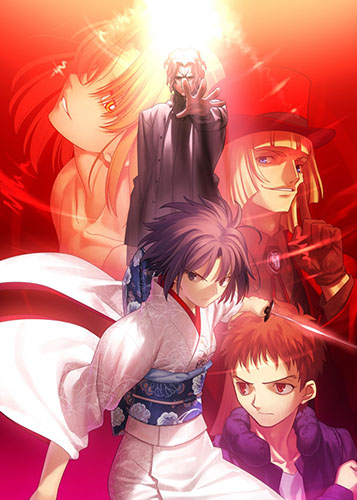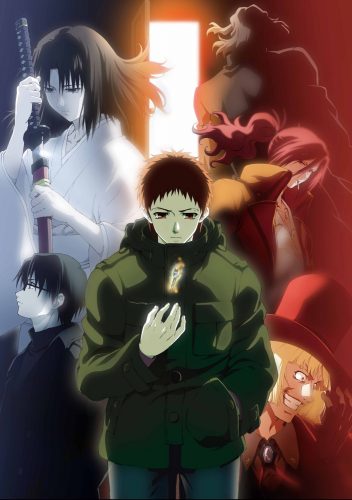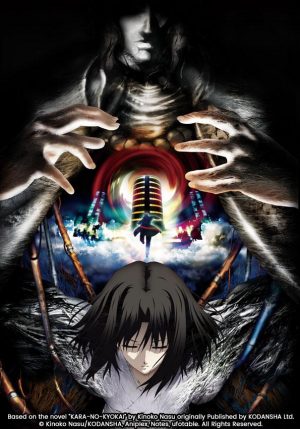
Paradox Paradigm is the 5th movie in the Kara no Kyoukai series and Takayuki Hirao’s first time directing an animated movie. The movie series follows the dramatic arcs of the novels, making Paradox Paradigm the series’ climax--the showdown between the protagonist and main antagonist. However, this movie proved more than just a simple adaptation. Borrowing thematic element from previous movies, Paradox Paradigm was the culmination of Buddhist and Taoist themes. It is the showdown between philosophies and the characters that embody them.
A lot of this article assumes that you’ve seen the preceding 4 movies or are aware of details explained in movies thus far. This article will contain spoilers of previous movies, as their details will help clarify this analysis. This article is a 2-part series, the first will speak about two major characters and their Taoist/Buddhist influence. The second will go into how Taoism and Buddhism influence the visual aesthetics and decisions made in the film.
Taoism Incarnate: the Clashing of Imbalance
Prior to this movie, viewers have seen Ryougi’s conflict with several antagonists. As viewers become more accustomed to Ryougi Shiki, they learn a very peculiar detail: Ryougi has a second personality. This second personality is her male self, the Yang (male) to her Yin (female).
Ryougi Shiki is a Taoist character. It’s even written in her name: 両 (Ryou or “both”) 儀(Gi or “ceremony”), 式 (Shiki or also “ceremony”)--literally both ceremonies. In the teachings of the Japanese Onmyōdō, or “The Way of Yin and Yang,” Ryougi is another way to say Yin and Yang.
As a child of the Ryougi clan, if a second personality manifests, the child inherits techniques to be an effective killer. At birth, she was destined for that role. However, society no longer has a need for killers. With society changed, her purpose no longer matters. When she gets into a traffic accident, she loses her other side, the male “Yang” that she’s known since birth. A traditional reading of this would be the loss of innocence--her adolescent period coinciding with the traffic accident.
Her skill as a killer violates social norms, her emptiness--her loss of “Yang”--attracts the supernatural. She twists conventional logic as she skirts between the boundaries of the living and the dead. Her “Mystic Eyes of Death Perception” lets her cut lines that disconnect living and non-living beings from existence. Ryougi not only trespasses on social and figurative boundaries, she cuts them.
Taoism warns against the dangers of imbalance, and often the series wants you to be aware of this. “If she was born to be a killer, has the instincts to be a killer, and desires to be a killer, then it’s logical and probable to that she will become a killer.” The movies directly address that logic, and asks for your faith, your belief. They want you to balance logic with faith.
Up until the 5th movie, Ryougi has not killed anyone (the nuance/semantics I’ll leave to you). However, with the 5th movie, things are now at their most imbalanced. It is the biggest test of both her and our own beliefs.
Denying Buddhism: the Heretic Monk
Araya Souren is the main antagonist and mastermind of Kara no Kyoukai. Araya is a former Buddhist monk, excommunicated after witnessing the origin of humans. In Type-moon lore, the origin of a person is one’s drive, their impulse that defines their existence. Under normal conditions, one’s origin never emerges, however Araya is a heretic. He violates religious and moral norms.
In his pursuit of the Root/the “origin of the world’s knowledge,” Araya awakens people to their origin, forcing their instincts to take control. This directly violates a Buddhist ideal. He increases suffering in his pursuit of knowledge. He prevents others from reaching enlightenment, binding their bodies to their desires.
In Buddhism, enlightenment is the truth about life that allows one to escape the cycle of suffering (reincarnation). When one has achieved enlightenment, that state is called nirvana. It is the final goal of Buddhism, a state released from suffering, desire, and oneself--a state of nothingness, a detachment from one’s mortal body.
Whereas Buddhism wants one to learn the truth about life, Araya Souren is fixated on death, his once noble goal of understanding human death now corrupted. Whereas Buddhism wants one to relinquish their body, Araya has lived for 300 years, binding himself and others to their bodies.
Araya’s power of “binding” is within the film’s title and Kara is also a synonym for The root (origin of knowledge). Kara no Kyoukai, or the “Boundary of Emptiness” (空/Kara, 境界/ Kyoukai). Araya is a paradoxical figure. By rejecting his former values, he pushes himself farther away from enlightenment.
However, as a paradoxical figure, he is a fitting antagonist for the 5th movie: Paradox Paradigm. His means to achieve knowledge has one obstacle, Ryougi Shiki, a person whose origin is “Emptiness,” the very thing Araya wants to reach.
Final Thoughts

While most of this article focused on two characters, I hope through an understanding of them, you’ve gained insight into the 5th movie and the religions that influence their design. In the next article, I’ll be discussing how Daoism and Buddhism emerge through the visuals and directing decisions of the film. I hope this article will be a perfect introduction for the themes of article 2, helping you appreciate the film series.
Recommended Post



